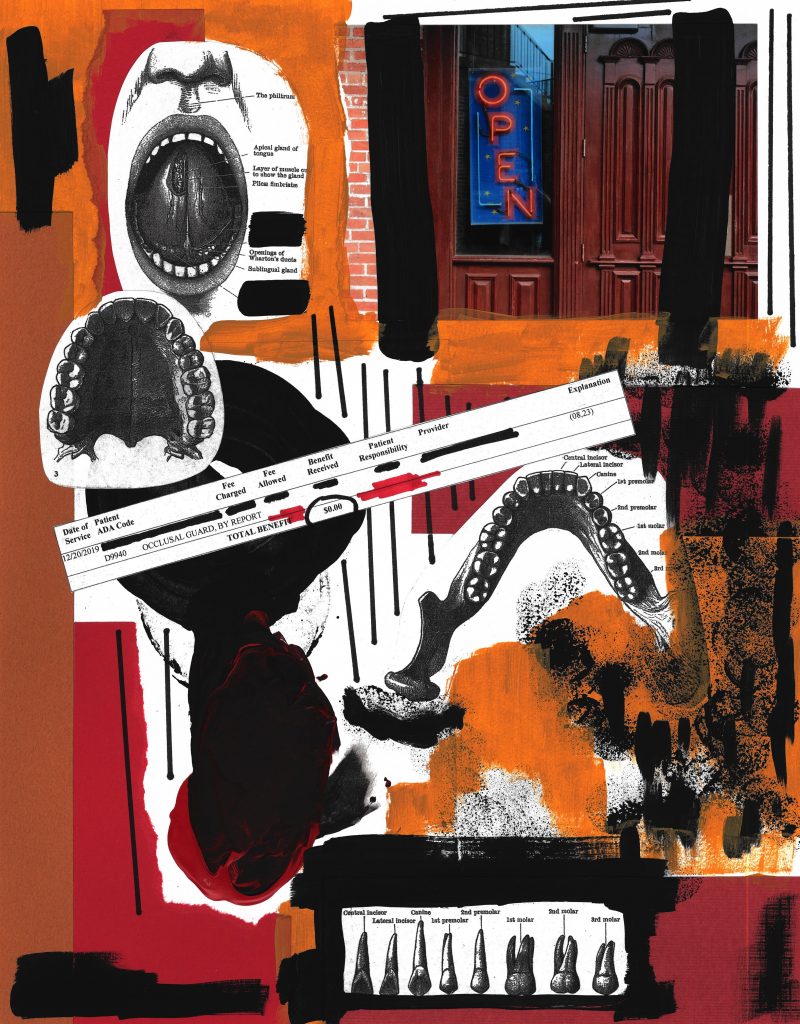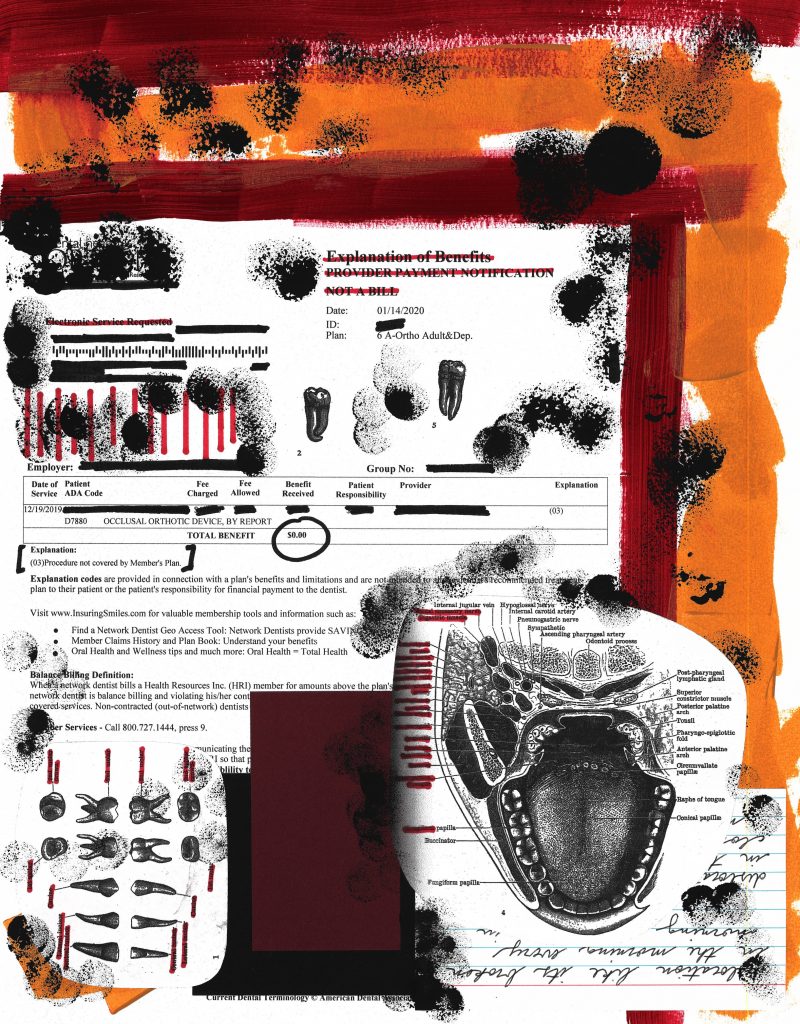TMJ, Part 1

Back to Top of Page | Back to Art | Back to Volume 14, Issue 2 – June 2020
TMJ, Part 2

Back to Top of Page | Back to Art | Back to Volume 14, Issue 2 – June 2020
About the Artist
Kristin LaFollette is a writer, artist, and photographer and is the author of the chapbook, Body Parts (GFT Press, 2018). She is a professor at the University of Southern Indiana and serves as the Art Editor at Mud Season Review. You can visit her on Twitter at @k_lafollette03 or on her website at kristinlafollette.com. Artist statement: I am a painter, a collage artist, and a photographer. My work often focuses on the human experience, anatomy, and medicine, and much of my work expresses my own experiences with chronic pain and a chronic illness. This particular collage series was created after years of dealing with a debilitating TMJ disorder. The problem developed when I was a graduate student without dental insurance or financial resources, and I spent years dealing with (and continue to deal with) daily, painful jaw dislocations which resulted in migraines, facial/bone pain, and problems with my ears/hearing. I created these collages after I finally obtained insurance, sought treatment, and realized that the insurance plan wasn’t even going to help me pay for the treatment or the expensive appliance that was needed to alleviate the dislocations and, thus, the chronic pain. The collages are an expression of my life with chronic pain, but also offer an ironic look into the state of the healthcare system in America.